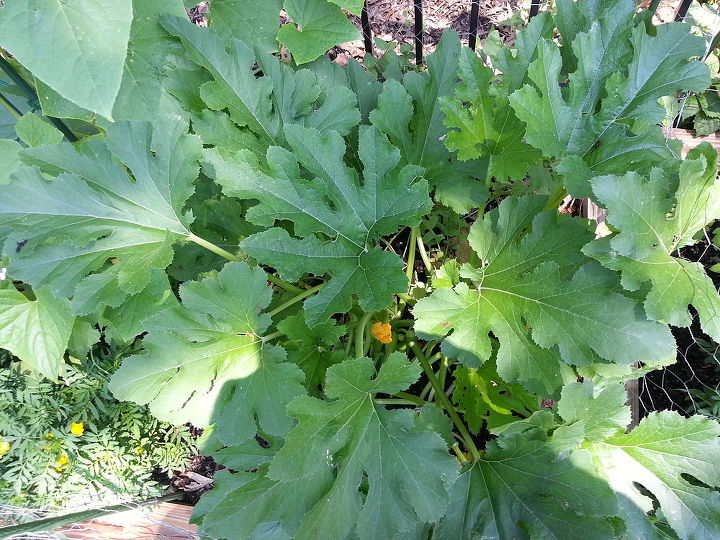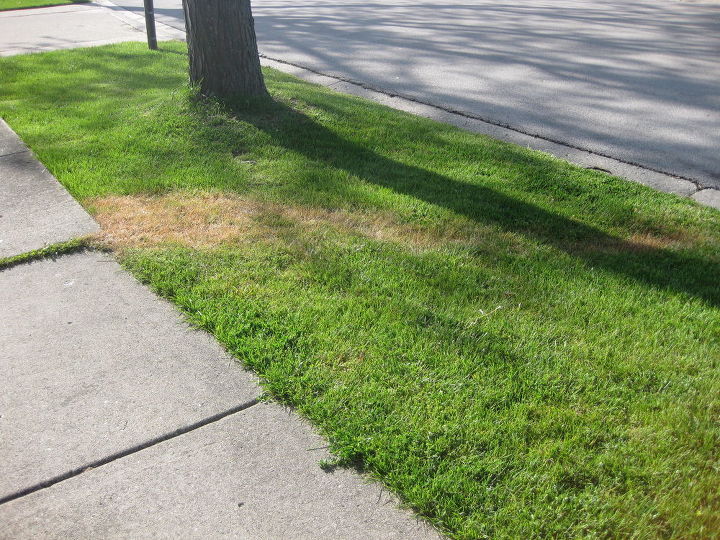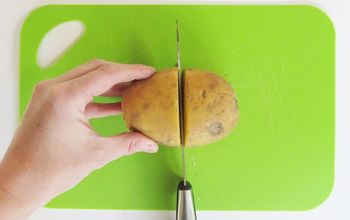When is the correct time to harvest my potatoes?
Related Discussions
GNATS - How to get rid of them?
Somehow my house and garden got tiny gnats that killed my fuchsia plant and fly everywhere. I have tried ALL the Web recommendations - soap and oil dishes, sand in th... See more
Marigolds growing! Should I pinch the buds?
My marigold plants are growing. I heard that pinching the buds until Autumn will allow them to grow without killing the plant. Is this true?
Growing garlic
Growing our first garlic, should we wait until the leaves are drying out before we pick it? Husband picked first one today along with our first potatoes.
How to keep mice out of your garden?
Hi everyone, I have mice in my garden destroying my vegetables and I have also noticed them in the barn and shed. Please can someone tell me how to prevent them from ... See more
What's the best flower/plant to grow in Texas?
I know that opinions vary, but what's your opinion?!I have great luck w Rosemary plants. Green all year long.
Squash Plants Large and Healthy and no Squash Growing?
2nd Season in a ROW! Squash plants growing large and healthy leaves and the stems near the roots are looking healthy and turning dark green, getting flowers that grow... See more
Trail of dead grass mystery?
Trail of dead grass appeared two weeks ago that starts in neighbor's yard and goes to the sidewalk, then continues past the sidewalk in a line into the grass into my ... See more





I have always been told when the plant dies back.
Michigan State University Extension has these tips for winter storage of homegrown potatoes:
Potatoes are tubers, and you want your plant to store as much of that flavorful starch as possible.
Sometimes before harvesting some potatoes become exposed to the sun because they are just barely underground and not covered with soil. Keep soil over the potatoes to prevent sunlight from turning them green. If you want new potatoes, which are small, immature potatoes about 1 to 2 inches in size, harvest them just before their vines die. Remember though that the more baby potatoes you dig, the fewer full-sized ones you will have for later in the season.
After you decide when to dig up potatoes, get the whole family involved. Equipped with a small basket, even the smallest child can share in this fun and rewarding experience.
To learn even more about potatoes, go to MSU Extension’s Michigan Fresh website. This site has a wide variety of fact sheets that will help you use, store and preserve fresh, locally grown fruits and vegetables. You will also find information on flowers and ornamentals.
This article was published by Michigan State University Extension
i do my last harvest when the plants are dead, but i dig them up throughout the season for some tender yummy small potatoes to fry up.
IN LATE SUMMER. NEXT TIME YOU PLANT POTATOES, IF YOU WILL USE THE METHOD MY FATHER USED YOU WILL BE ABLE TO HARVEST THEM THROUGHOUT THE GROWING SEASON. HE WOULD PLANT THE POTATO EYES IN A SHALLOW ( ABOUT 2 INCHES DEEP ) TRENCH, COVER THEM UP AND THEN SCATTER ABOUT 14 INCHES OF STRAW OVER THE TOP. WATER THEM WELL AND THE POTATO PLANTS WILL COME UP THROUGH THE STRAW ( WEEDS WILL NOT ) . THEN WHEN THE POTATO PLANTS STARTED TO BLOOM, HE WOULD GENTLY LIFT UP THE STRAW AND SEE HOW BIG THE POTATOES WERE ( THEY GROW ON TOP OF THE GROUND OR IN THE STRAW) AND WOULD PICK THE LARGEST ONES TO HAVE FRESH " NEW POTATOES " TO EAT LONG BEFORE ANYONE ELSE HAD FRESH POTATOES . AT THE END OF THE GROWING SEASON HE WOULD DIG TO SEE IF THERE WERE ANY POTATOES THAT HAD GROWN I THE GROUND. USUALLY VERY FEW OR
SOMETIMES NONE.
TO ANSWER P.J. WISE; WHEN MY FATHER USED THE STRAW METHOD, HE WOULD PICK THE LARGER ONES AND THERE WOULD BE MORE SMALLER ONES TO TAKE THEIR PLACE. THEY WOULD IN TURN GROW TO BE LARGE ONES. ONE YEAR THE POTATOES CAME UP THROUGH THE STRAW AND GOT FROST BITTEN AND DIED. DAD THOUGHT HE WOULD HAVE TO REPLANT THEM, " WRONG " THEY CAME BACK AGAIN AND THEY GOT FROST BIT. AGAIN HE THOUGHT HE WOULD HAVE TO REPLANT, " WRONG AGAIN " . AND HE THOUGHT HE WOULD HAVE TO REPLANT. THEY CAME BACK THE THIRD TIME AND HE HAD THE BIGGEST POTATO CROP HE HAD EVER SEEN. WHEN HE WAS YOUNGER , HIM AND HIS BROTHER USED TO RAISE POTATOES AND TOMATOES TO SELL TO THE ALLEN CANNING COMPANY IN BENTONVILLE ARKANSAS. THEY WOULD ALSO PICK WILD POLK GREENS ( SOME PEOPLE REFER TO THEM AS POKE WEED OR POKE SALET ) AND SELL THEM TO ALLEN CANNING COMPANY.